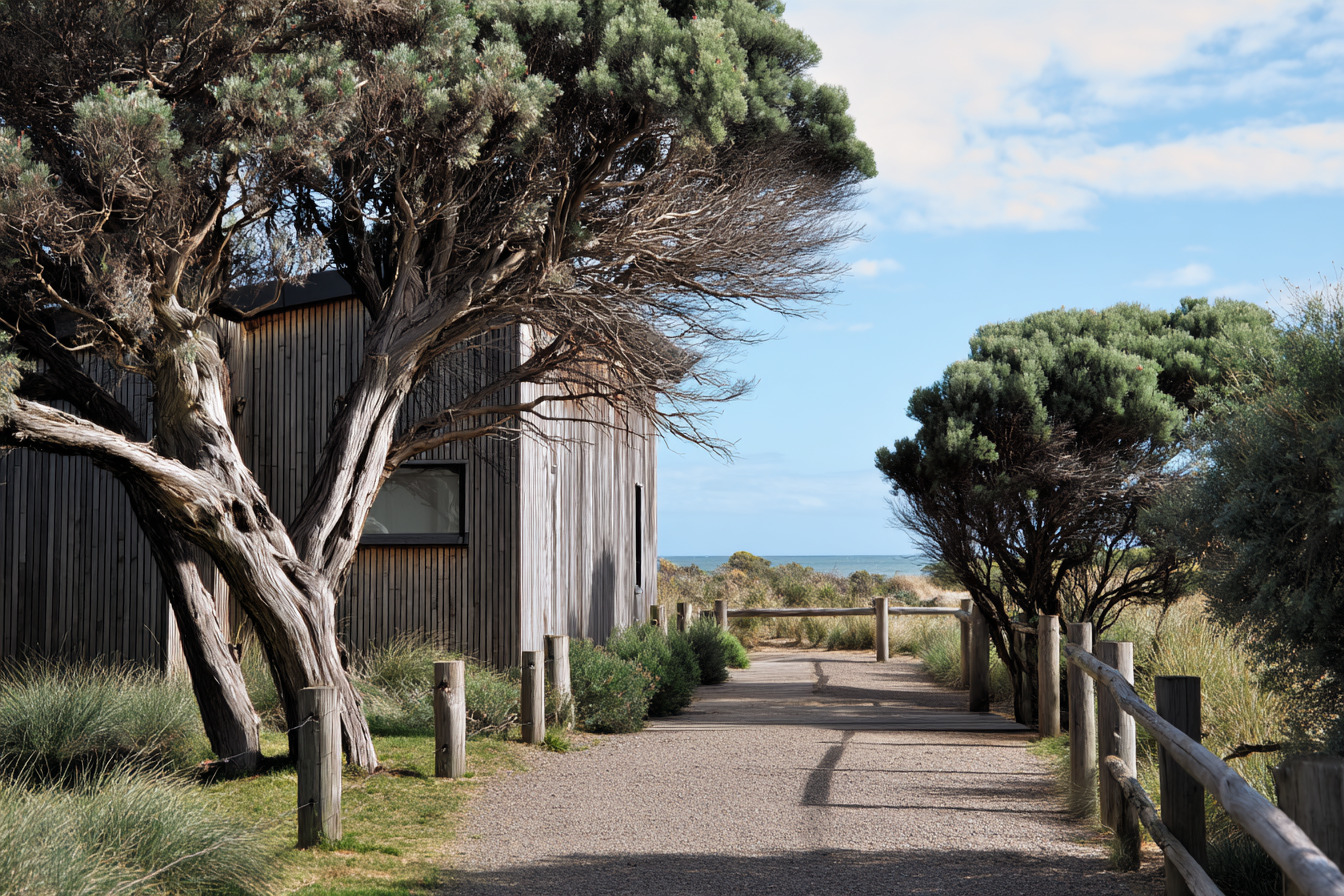
Story
Heritage overlay on the Mornington Peninsula: a practical guide for homeowners
If your home sits in a Heritage Overlay (HO), you’re living with an extra layer of planning control designed to protect places and precincts of cultural or natural significance. On the Mornington Peninsula, the HO comes from Victoria’s planning scheme and is applied through a schedule that lists individual places and wider precincts across the Shire. Its purpose is to conserve significant places and the elements that contribute to that significance, and to make sure new works don’t harm it. You can check whether your property has an overlay using the Shire’s planning scheme maps or by contacting Planning Services.
When you need a planning permit
Under the Heritage Overlay, a planning permit is required for a wide range of activities, including (but not limited to):
- Subdividing land.
- Demolishing or removing a building (including partial demolition of contributory elements).
- Constructing buildings or other structures (including new fences, garages and studios).
- External alterations such as structural work, cladding changes, rendering or abrasive cleaning.
- Displaying signage.
- External painting where external paint controls apply, or where you propose to paint an unpainted surface, or where the painting effectively acts as advertising.
- Internal alterations where the schedule lists internal alteration controls.
- Works/repairs/routine maintenance that change the appearance or aren’t carried out to the same detail, specification and materials.
- Removing, destroying or lopping a tree where the schedule lists tree controls (noting specific exemptions).
Before you start drawings, book a free pre-application heritage advice meeting. A heritage officer can flag what’s likely to be supported—and what isn’t—so you don’t burn time and money heading the wrong way.
What the Municipal Heritage Review means for you
Mornington Peninsula Shire has been running a multi-stage Municipal Heritage Review to update older studies and pick up more recent (post-WWII) places. Stages 1–3 looked at Mount Eliza/Mornington/Mount Martha, Safety Beach–Rye–St Andrews Beach, and Blairgowrie–Sorrento–Portsea. In June 2024, Council adopted findings for Stage 4 (Western Port & Hinterland) and Stage 5 (Other Places/Watchlist) and resolved to seek a planning scheme amendment to add recommended places to the overlay. Translation: if you’re in areas like Balnarring, Main Ridge, Moorooduc or Tyabb, new citations may apply once the amendment is approved—so check for updates early in your project.
Common pitfalls (and easy ways to avoid them)
1) “It’s just maintenance.”
Repointing with the wrong mortar, swapping original profiles for modern substitutes, or harsh cleaning (e.g., sandblasting) can change appearance and trigger a permit. Ask first.
2) Painting assumptions.
In some schedules, external painting is controlled—and painting previously unpainted fabric often needs a permit. Don’t assume paint is exempt.
3) Demolition by stealth.
Removing verandahs, chimneys or original windows is still demolition. If an element contributes to the streetscape or the place’s significance, you’ll need permission.
4) Forgetting the little things.
New fences, garden walls, sheds and outbuildings are “buildings and works”. Design them to be recessive and sympathetic and include them in your application from the start.
5) Missing “special” controls.
Some properties carry internal alteration or tree controls in the schedule. Always read your specific entry, not just the generic rules.
Designing sympathetic updates (that get supported)
- Start with significance. Read your property’s heritage citation (if available) to understand what matters—roof form, chimneys, verandahs, timber details, siting. Keep those legible.
- Repair like-for-like. When you’re repairing, match material, profile and section so the result is indistinguishable from the original.
- Additions that read “new, not louder.” Push bulk to the rear/side; keep the heritage volume primary when viewed from the street; echo proportions without copying.
- Finesse materials. Complementary cladding, restrained colour, and simple detailing usually play nicer with older fabric than statement materials.
- Detail for reversibility. Where there’s doubt, design so work can be undone later without damage—often looked on favourably.
- Use the Shire’s supports. Tap into the heritage advisory service; ask whether a planning fee waiver applies if the permit is only needed because of the HO; and check rebates/grants that can offset conservation costs.
Help, rebates and fee waivers
The Shire’s Heritage Places Policy recognises that caring for heritage can cost more and offers several supports:
- Rates rebates: up to 25% for individually listed places; up to 12.5% for contributory places in a precinct (calculated using Capital Improved Value vs Site Value).
- Heritage Grants: competitive funding to support best-practice conservation.
- Planning permit fee waiver where a permit is only required because of the Heritage Overlay and set conditions are met.
- A free heritage advisory service to guide maintenance and development.
Quick homeowner checklist
- Check overlays on your property and read the HO schedule entry for your place/precinct.
- Book a free pre-app heritage meeting before you draw or lodge.
- Confirm triggers: demolition/partial removal, buildings & works (incl. fences), external alterations, painting (where controls apply or on unpainted fabric), internal works (if specified), tree works (if specified).
- Note the Review: Stage-4/5 outcomes (June 2024) may add new HO places via amendment—particularly in Western Port & the hinterland.
- Ask about support: rebates, grants and possible fee waiver.
This guide is general information—always confirm the current rules, your property’s schedule entry, and any exemptions with Mornington Peninsula Shire before works begin.
